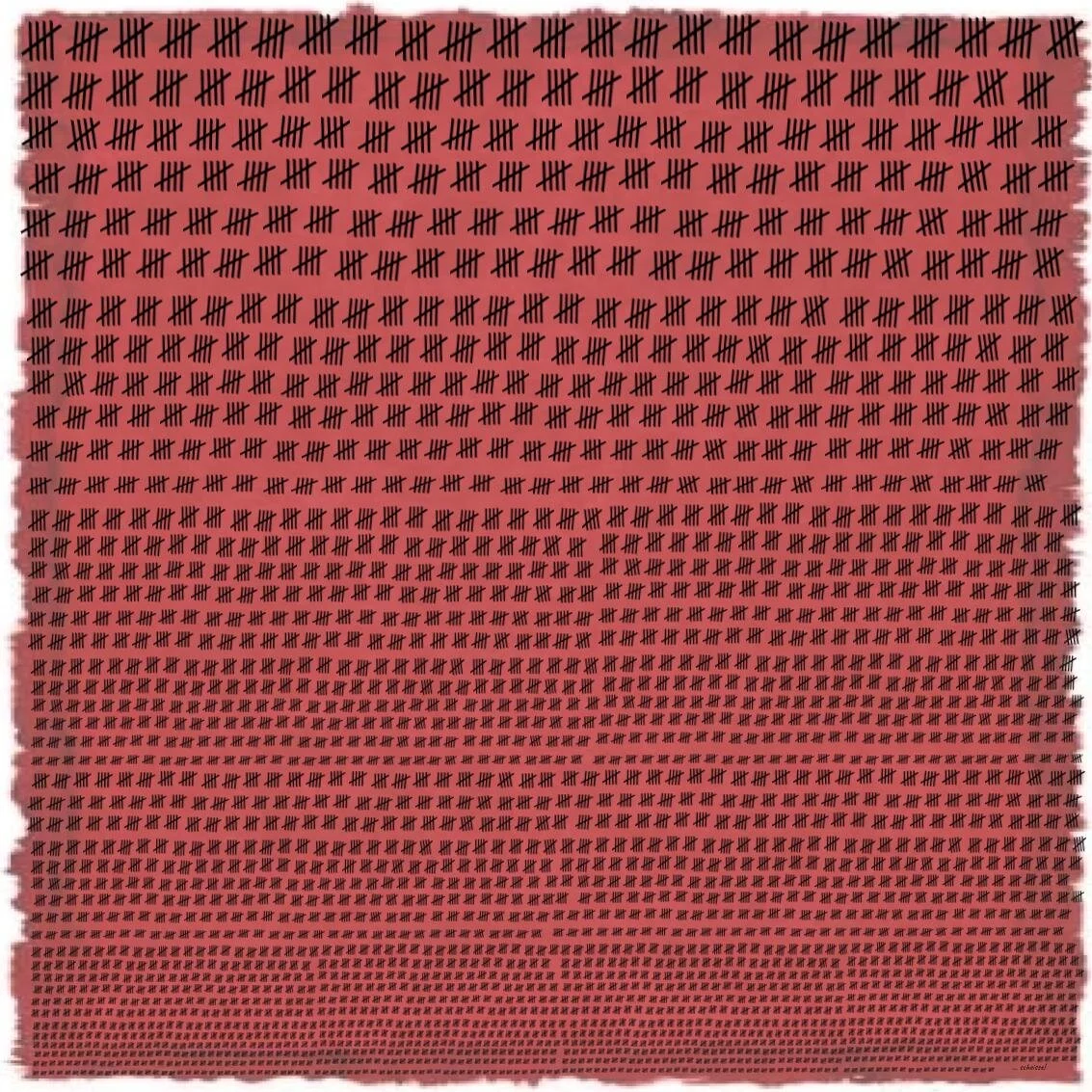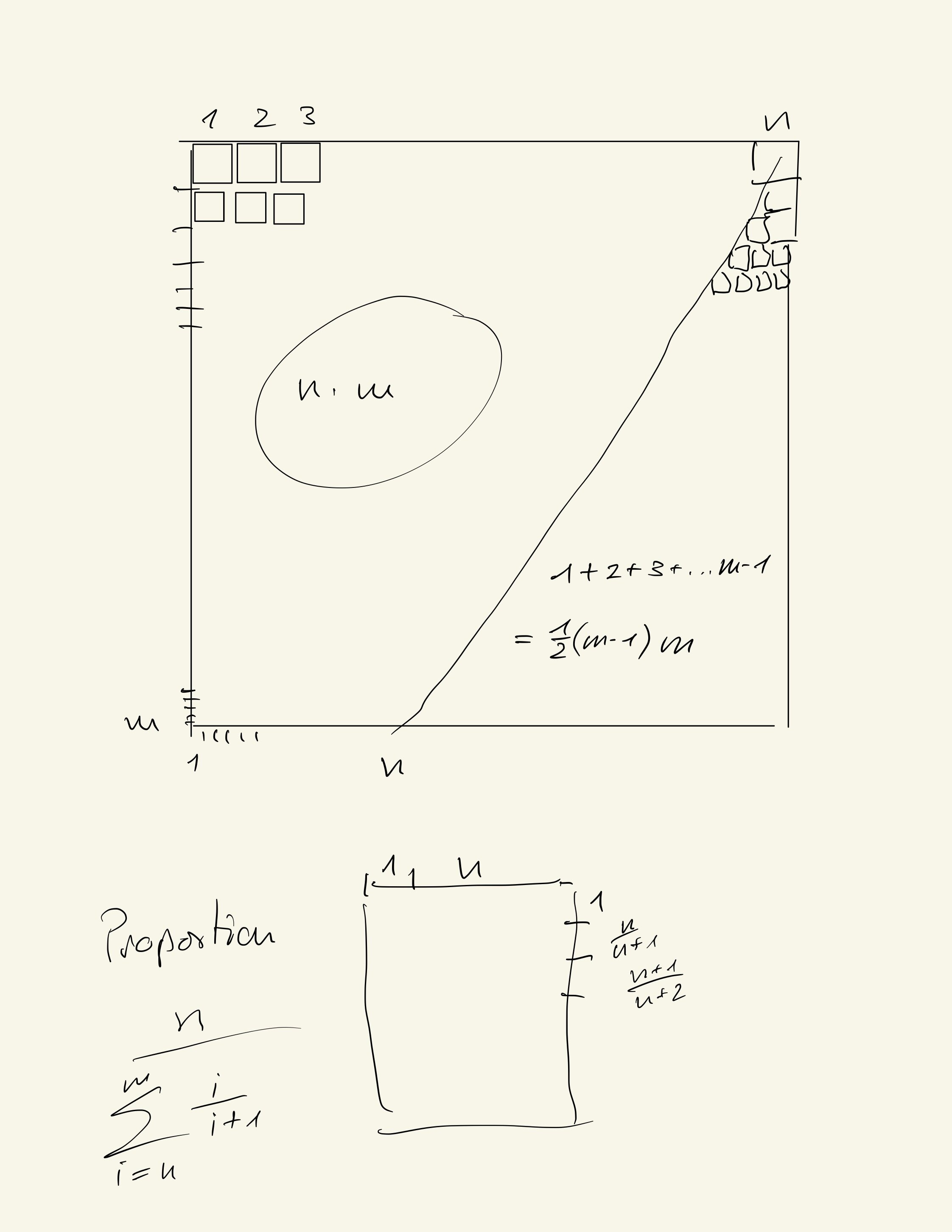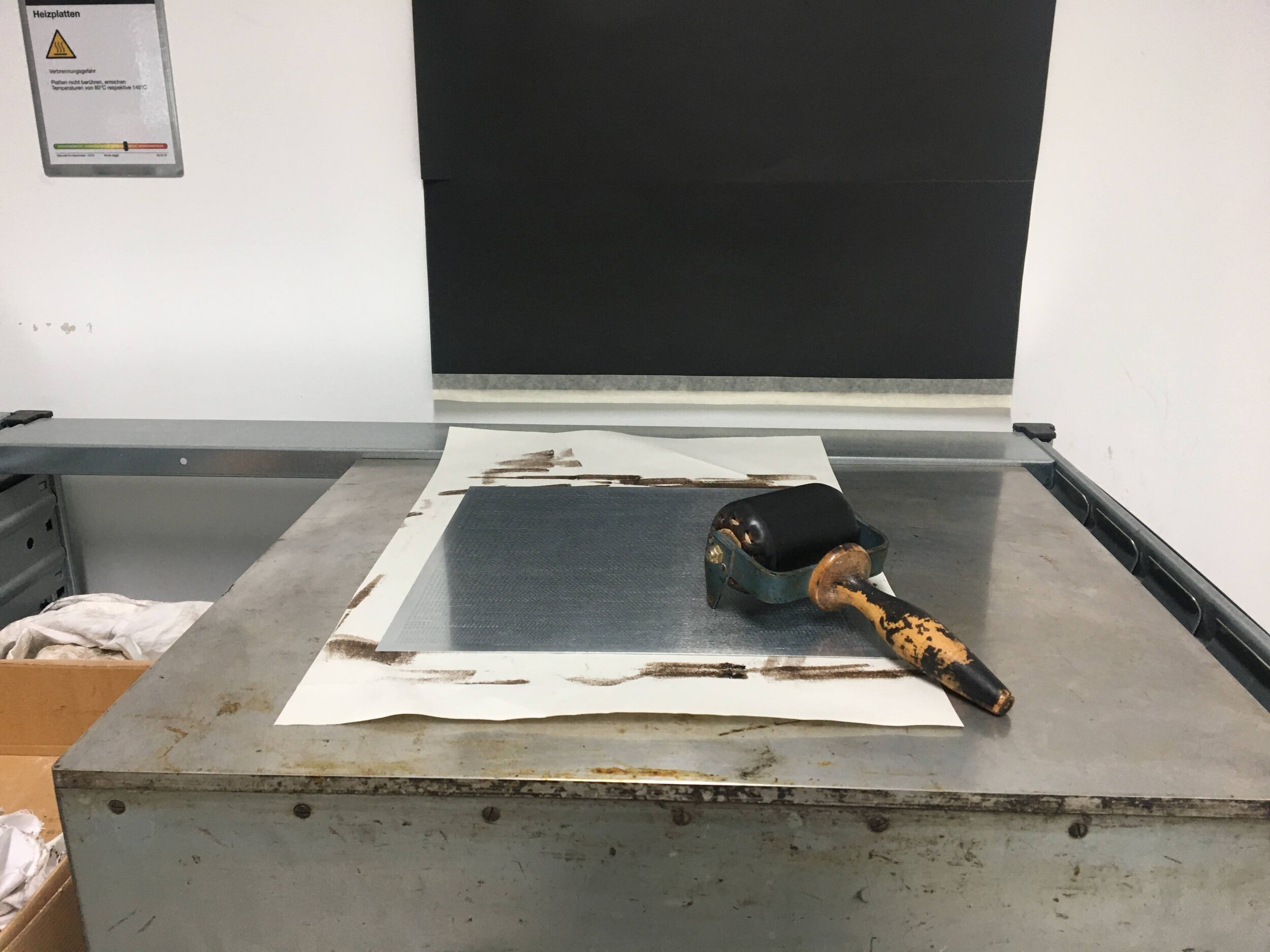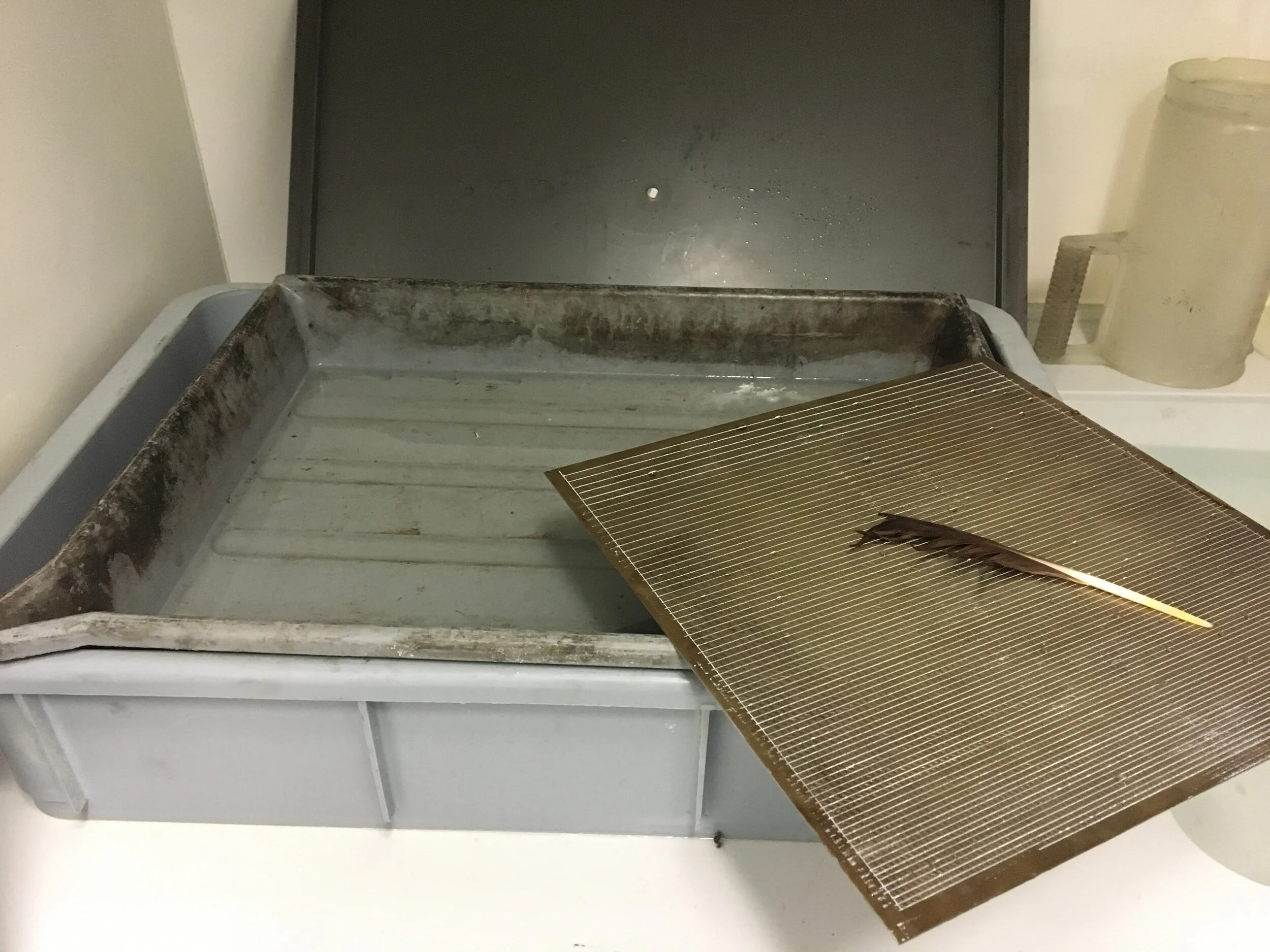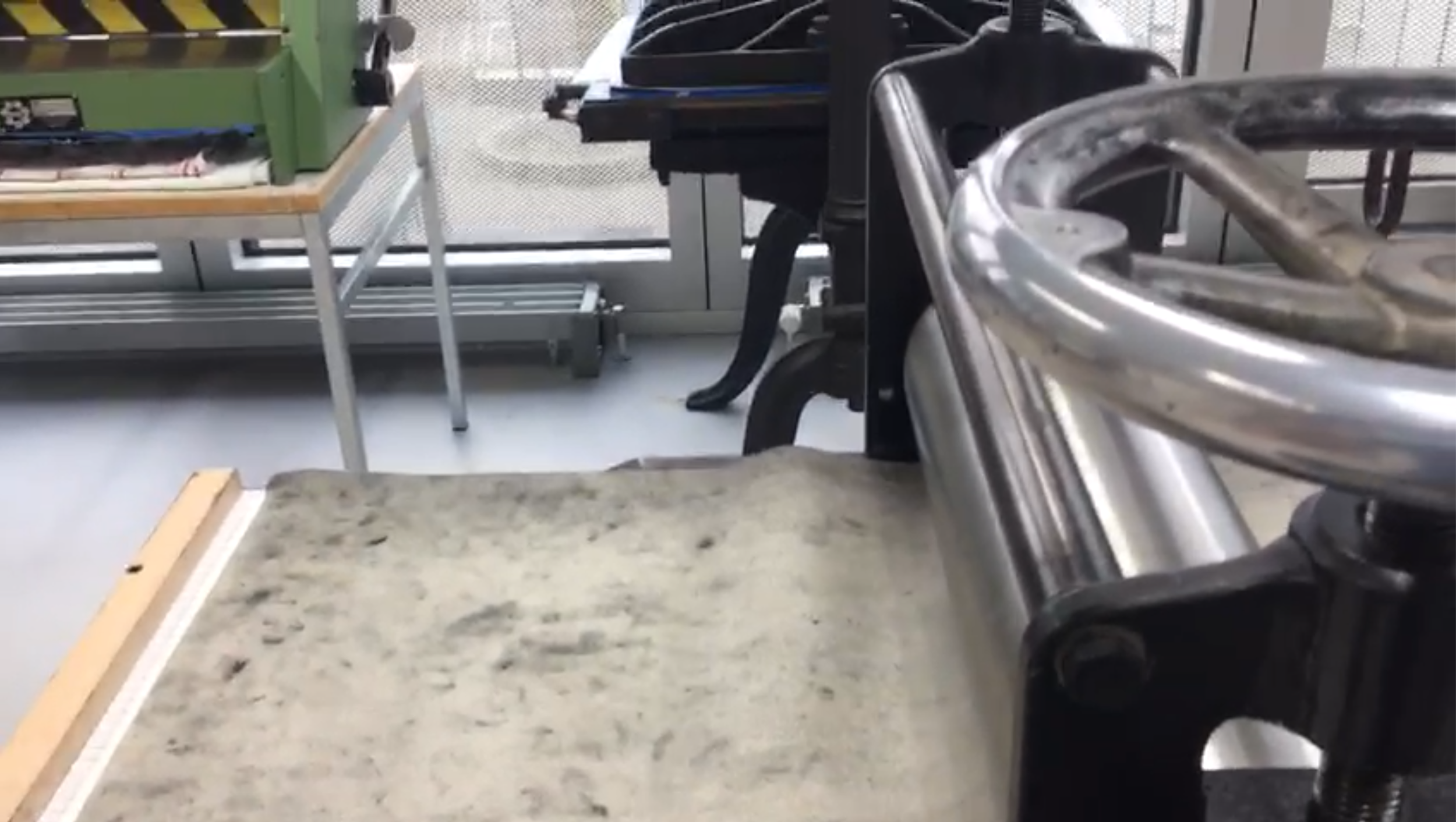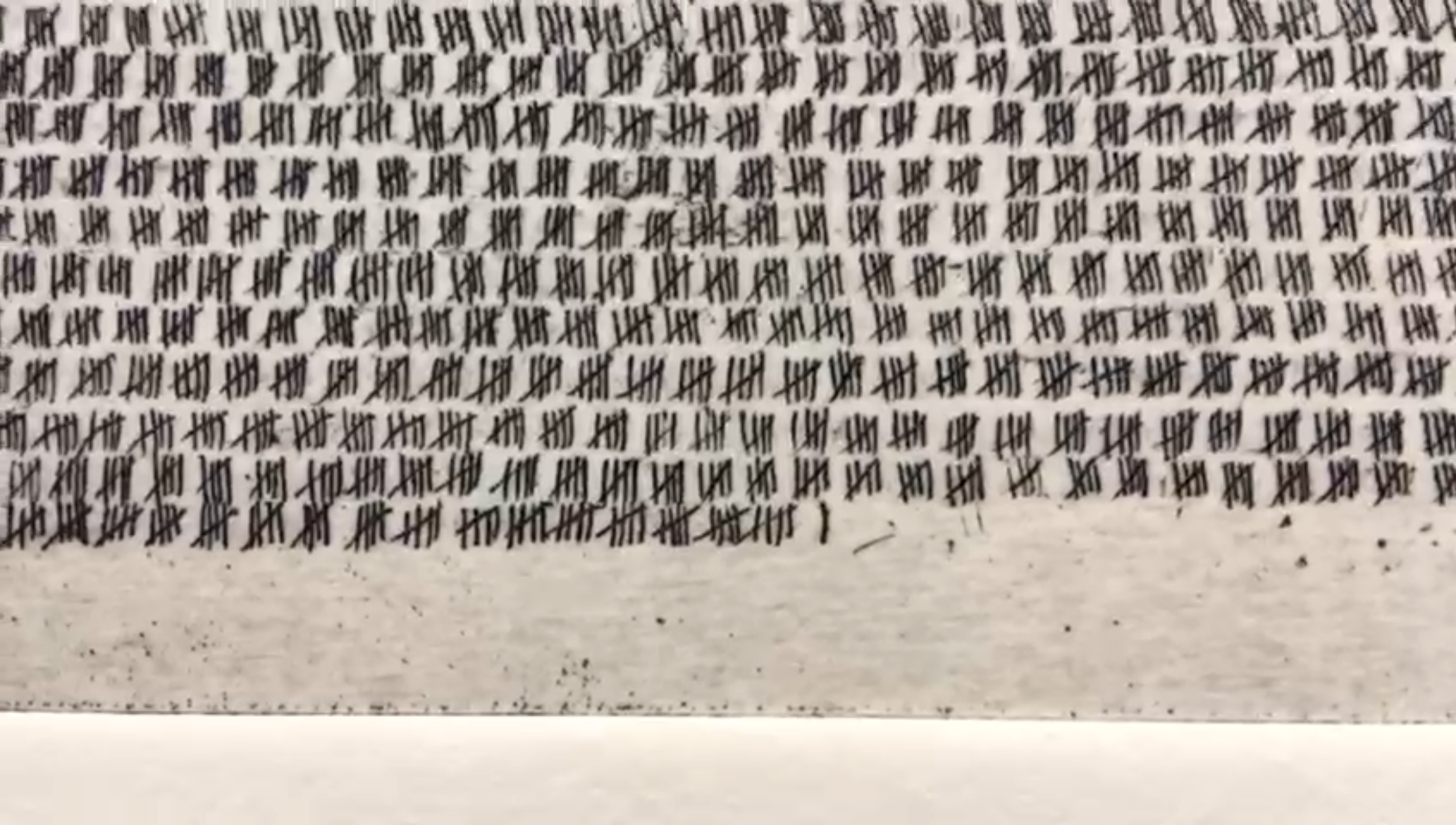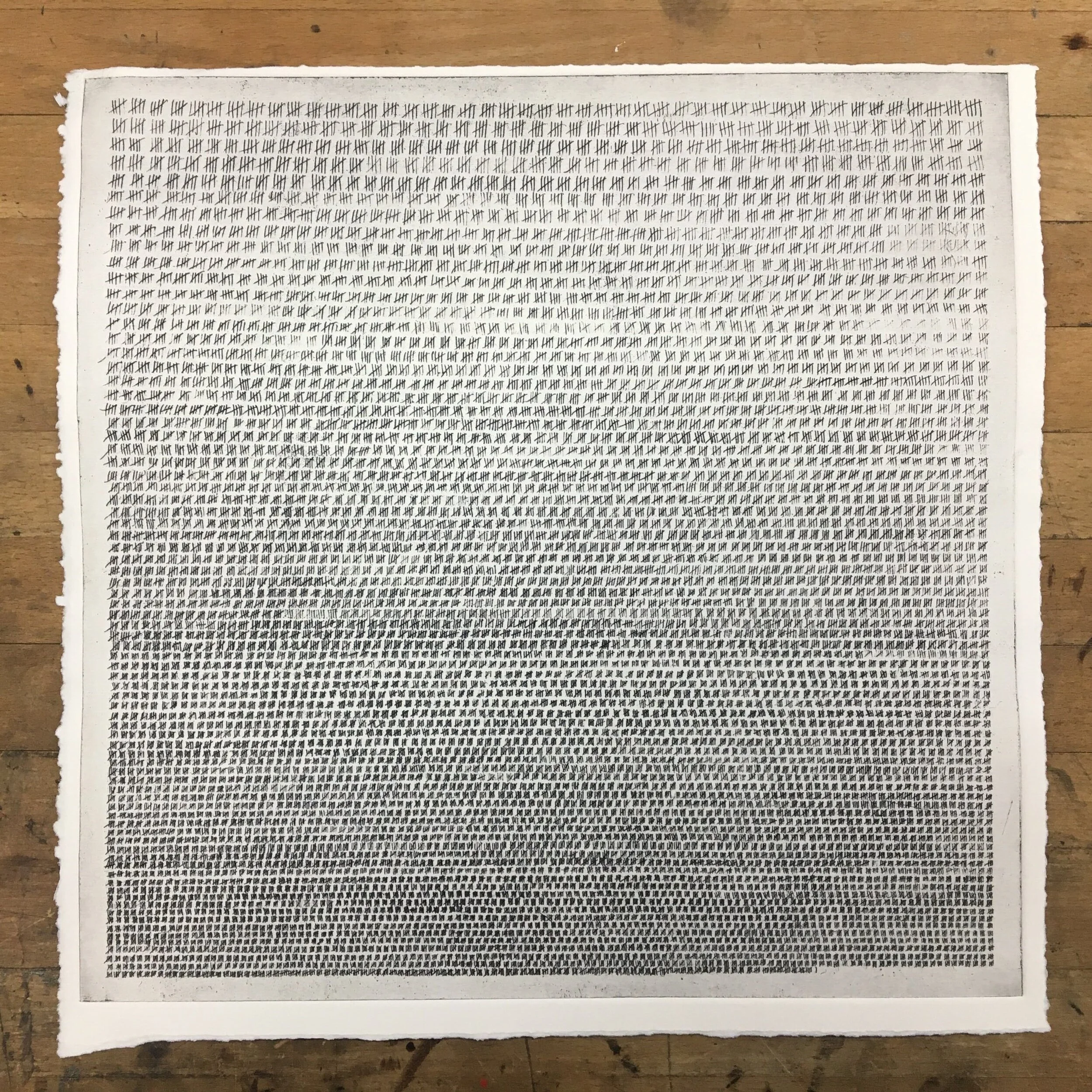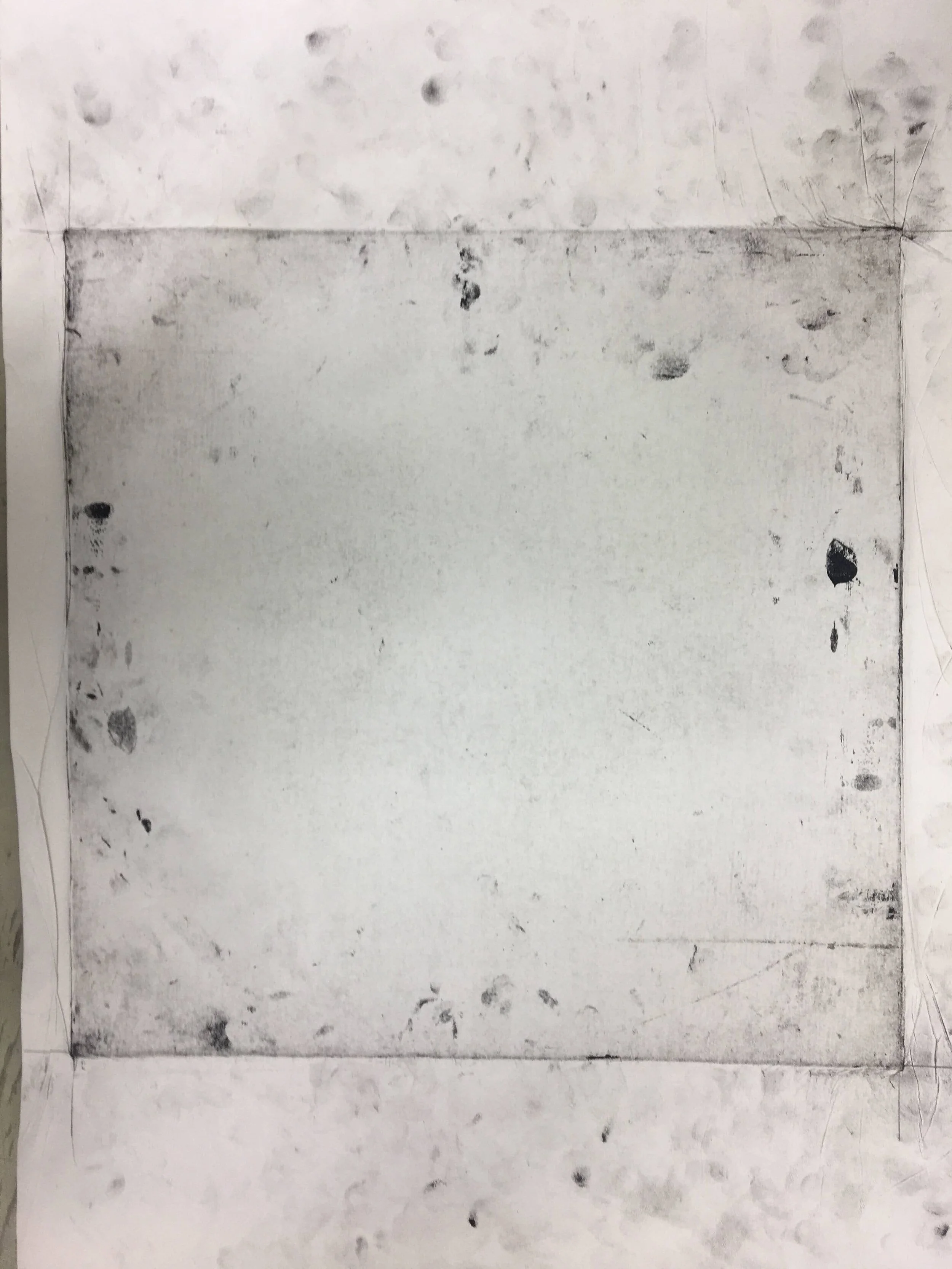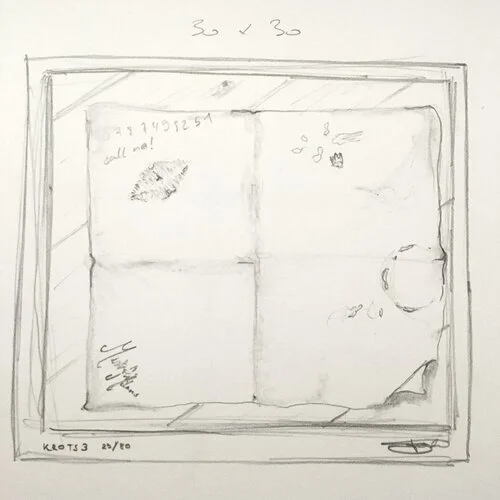The art of making: KROTS4 'Bedrohte Art'
hey there, sascha here. we wanted to give you the opportunity to have a look behind the curtains of how the limited edition prints you’ve received were made. from first ideas, digital mockups, discarded ideas through to the end results. do what you want with it, ignore it, love it or try it yourself…
first digital mockup of the idea to the stagedivers album “bedrohte art” (translates to: “endangered species”). with the wordplay “endangered art” as a half translation / half false friend in mind the idea was to create a piece that was endangered in multiple ways:
firstly, the amount of tally marks corresponds to the number of endangered species on the IUCN Red List of Threatened Species (32’441 at the time… shockingly already over 35’500 by now…)
secondly, the manual printing technique used (hard ground etching) is something not found very often anymore. specially not outside small art-print series due to it being very labor intense per print. with the worlds constant productivity oriented mindset this technique might as well be classified as endangered.
thirdly, keeping with the “endangered art” wordplay i was trying to give the prints themselves an expiration date of sorts. what could i use that goes bad/changes appearance over time? yep, blood!
so, all in all the idea was a print of a hard ground etching of 32’411 tally marks on hand torn laid paper that was dyed red with blood. let’s see how that all turned out…
after the mockup one of the first steps was to figure out how to fit all the tally marks on to metal printing plate. it would have been easier to do with all the tally marks being the same size but i wanted to convey a feeling of panic that the lines are never all going to fit and thats why they keep getting smaller. in the end they all fit but only because the print is a snapshot of its time. sadly the reality is, that list keeps on growing… pattern made using processing and some maths with the help of my excellent maths and sound synthesis mentor martin neukom (check out his awesome book for all things maths and music)
first quick etch test with lines in different sizes and different times spent etching in the acid bath. tally marks are mirrored horizontally because i didn’t think about that happening when printing. all the more reason for tests… lines looked best at around the 3min mark. shorter times led to lines being to pale and longer times became blotchy with the smaller tally mark sizes. anyone recognise the background? (KROTS3 - Mister Milano) ;-)
now for the real thing, no more tests. started out with polishing the metal plate to a mirror finish. the shinier the metal the whiter the un-etched print background will be later on. alternating patterns while polishing to avoid directional scratches.
wash your metal plate, make sure its free of fat, oil, dirt and dust. dry it and then start applying the hard ground on a heating plate. this is a waxy asphalt layer that resists acid when etching. using this technique instead of drypoint gives a clearer line and is more durable when printing.
with the hard ground having cooled down and hardened i then traced the horizontal lines of my processing generated pattern using a white carbon paper so i had some guidelines on the metal plate.
using the corresponding row of vertical dividers on the pattern i then scratched all the tally marks into the hard ground using a slightly dull pen-like needle. this was not done quickly but some good tunes and a couple of beers got me through the hand cramps caused by drawing 32’441 lines…
having finished scratching all the lines it was time for etching. goal was to etch for about 3min overall. for better results its important to constantly wipe a way an bubbles forming on the metal plate while etching. this is done best with a feather. it is highly resistant to acid but still soft enough to not scratch away and of the hard ground. doing this the times for a minute with washing in water in between give a nice and even etching. at this point i still noticed some differences in the amount of etching taking place this was not due to bad etching practice but because of inconsistent scratching of the ground. this actually gives the lines a very dynamic character since they vary in thickness and in clarity.
after etching use solvents, a brush and cotton waste to get rid of the hard ground
after tearing the paper to size it needs to be made wet so it becomes softer and is better for printing than when dry. paper is just dipped into water, left to drip off and then stored between two panes of glass. should be left for at least 2h before using so that the core of the sheets of paper are nice and soft. leaving the paper too wet for too long can lead to mould.
time to print… almost! using a spatula work the ink a little bit to make it nice and homogeneous and warm it up a little bit. working on a hot plate apply ink to the printing plate with a soft nylon scraper. after spreading the ink all over and massaging it into the etchings remove excess ink with the scraper and the then wipe clean with the ball of you hand… this takes time! once you see yourself smiling in the mirror polished metal plate you’re ready to print!
time to print… really! time to print! lay down some newspaper to keep things clean, metal plate on top with ink facing up, wet paper on top of that and another sheet of newspaper as the top layer. this then gets rolled through the roller printing press with 2 layers of felt and then tadaaaa print nr. 1! now just lather, rinse, repeat another 60 times…
printing done!
time for blood experiments. this is pigs blood from the local slaughterhouse, diluted with some water, painted on to paper or paper dipped into blood. i thought it would quickly oxidise and become brown so i mixed in some nitrite salts to stop oxidation and prolong the red color of the blood but strangely the pure blood was more red than the blood with nitrite salts.
some blood variations:
fingerprint - blood on out hands
splatter - too much “dexter” or not enough?
bloodbath - less contrast in print not so great
a couple of days later the leftover blood that was in the fridge had gone rancid and had a sharp wretched stink so i that was enough of that.
i think a lot of the time it’s good to stick to initial ideas but you have to know when it’s to discard something.
32’441 and counting…
sometimes leftovers are beautiful too!
32’441 and many many more thanks to the masters aldo mozzini and piär amrein for sharing all their wisdom but still letting me make my own mistakes!
SAILING FOR PEACE KLUB RECORD OF THE SEASON winter 2020
Right on time to celebrate the 20th anniversary of this hard working band. It’s direct and very rough.
KROTS4
Comes with an obi triangle and a numbered art print.
For VINYL KLUB members only!



